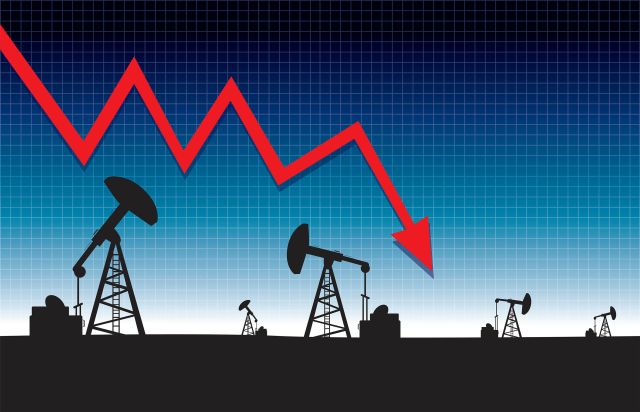
(Source: Shutterstock)
The price of West Texas Intermediate (WTI) crude oil plummeted almost 8% on Aug. 1 to the lowest level in about six weeks after President Donald Trump said he would impose an additional 10% tariff on $300 billion worth of Chinese imports starting Sept. 1.
Price saw a slight bounce back on Aug. 2. Brent futures rose $1.50, or 2.5%, to $62 a barrel by 0845 GMT on Friday, while WTI futures gained $1.07, or 2%, to $55.02 a barrel.
A prolonged trade war between the world’s two largest economies had triggered worries about oil demand.
“Persistent concerns about demand have held back prices all year long, and this only reinforces those concerns,” Ashley Petersen, senior oil market analyst for Stratas Advisors, told HartEnergy.com. “Chances of a sharp bounce-back are unlikely given the open-ended nature of the problem with no end in sight for trade discussions.”
Petersen described the tone of the announcement as more positive than in previous cycles of trade discussions between the U.S. and China and noted that the discussions will continue.
“So this could be more of a posturing exercise which increases the chances tariffs are pulled back sometime in September as a goodwill gesture,” she said.
RELATED:
Frac Spread: At This Rate, Will Oil And Gas Be OK?
Brent crude fell $4.55, or 6.99%, to settle at $60.50 a barrel, having dropped as low as $60.02, the lowest since June 13. The international benchmark’s decline on Aug. 1 was its biggest daily percentage drop since February 2016.
WTI ended the session down $4.63, or 7.9%, at $53.95 after sinking to a low of $53.59, the lowest level since June 19. It was the biggest percentage decline since February 2015.
“Oil prices have fallen considerably today, done in by a one-two punch of the underwhelming Federal Reserve easing moves and the announcement by President Trump that more tariffs will be placed on imported Chinese goods,” John Kilduff, partner at Again Capital Management, told Reuters.
Prices had fallen earlier on continued reaction to the Fed’s policy decision on July 31. The Fed cut rates as expected, but market sentiment took a turn on remarks by Fed Chairman Jerome Powell that the move might not be the start of a lengthy series of cuts to shore up the economy against global economic weakness.
The Fed’s less-dovish-than-expected message triggered a rebound in the dollar, sending the dollar index to a 26-month high of 98.93 on Aug. 1. A stronger dollar makes greenback-denominated oil more expensive for holders of other currencies. The dollar index turned negative after Trump’s comments on tariffs.
Crude prices could see bearish momentum remain after breaking below critical support levels on Aug. 1, said Edward Moya, senior market analyst at OANDA in New York.
Oil’s drop came after a bigger-than-expected fall in U.S. inventories and a drop in OPEC production in July, typically bullish drivers for prices.
Inventories at the Cushing, Okla., hub, the delivery point for U.S. crude futures, fell by 1.5 million barrels from July 26-30, traders said, citing data from market intelligence firm Genscape.
But U.S. output remained near a record, above 12 million barrels per day (bbl/d), making the country the biggest producer in the world.
Output in Texas, the largest producing state, rose by 16,000 bbl/d to 4.97 million bbl/d in May, a record high, U.S. government data showed.
“The market was already wobbly on reports by analysts that production would increase faster than demand by 1 million barrels per day in the new year. That kept the oil market under pressure even when the stock market went up,” said Phil Flynn, analyst at Price Futures Group in Chicago.
“But the final straw for the oil market was when Trump imposed these additional tariffs and caught the market by surprise. It is raising concerns that the tariffs will slow economic growth and cause a drop in oil demand.”
Total U.S. oil demand in May fell 98,000 bbl/d to 20.26 million bbl/d, data showed on Aug. 1.
OPEC and partners including Russia, an alliance known as OPEC+, have been curbing output this year to support the market. In July, OPEC production revisited a 2011 low, helped by a further cut by Saudi Arabia, a Reuters survey showed.
Recommended Reading
Kraft Heinz, Carlton Power Partner to Develop Green Hydrogen Plant
2024-02-05 - Located at Kraft Heinz’s Kitt Green manufacturing plant in Wigan, Greater Manchester, the proposed $50.1 million plant will have a 20-megawatt capacity.
Summit Carbon Solutions, POET Partner on CCS Project
2024-02-07 - The partnership will incorporate POET’s 12 facilities in Iowa and five facilities in South Dakota into Summit’s carbon capture and storage project.
Enough! Consumers Say They’re Overserved on Energy Transition, EY Finds
2024-02-11 - Two thirds of energy consumers are unwilling to spend more time and money to be sustainable, Ernst & Young reported.
Bunge, Chevron Announce FID on Oilseed Processing Plant
2024-03-05 - Bunge Chevron Ag Renewables' facility will be used to manufacture low carbon renewable fuels from oilseed.
Trace Carbon Solutions Applies for First Phase of Class VI Wells at Evergreen Hub
2024-03-12 - Trace is applying for its subsidiary Evergreen Sequestration Hub to be allowed to permanently sequester CO2 in underground geological formations in Louisiana.





